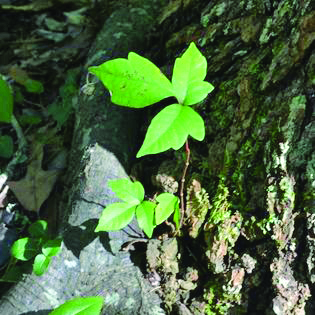As summer slowly meanders toward fall, my thoughts turn to cooler weather and English ivy removal from our woods, a thankless task, but good upper body exercise. Unfortunately, English ivy often shares the woodland floor and tree trunks with another troublesome vine—poison ivy, which offers the added bonus days or weeks of itchy, weeping, crusting blisters.
I follow several gardening and native plant Facebook pages, and I am surprised to see how many people post pictures of the infamous vine, asking, “Is this poison ivy? I touched it, and now my hand is itchy and has red bumps on it.”
I want to respond, “Didn’t your parents tell you ‘Leaves of three, let it be?’” Well, maybe they didn’t, so I agree that the plant in the photo is indeed poison ivy and direct the person to the nearest pharmacy.
Sometimes the plant in the photo isn’t poison ivy (Toxicodendron radicans); it is poison oak (Toxicodendron pubescens) or poison sumac (Toxicodendron vernix), although you may discover several oth...
To view the rest of this article, you must log in. If you do not have an account with us, please subscribe here.


